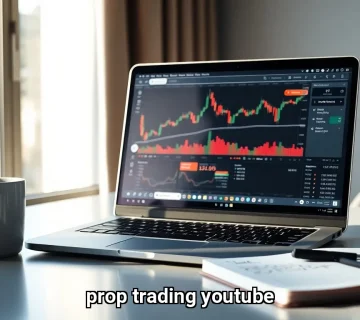Imagine a world where financial firms use their own capital to navigate markets, seeking profit opportunities beyond traditional client services. This is the realm of proprietary trading operations—an arena where expertise, technology, and bold strategies converge to capitalize on market inefficiencies. Unlike typical brokerage activities, prop trading involves firms actively managing their own investments, embracing both the potential rewards and risks that come with it.
Understanding proprietary trading operations means diving deep into the sophisticated processes that drive these self-directed trades, from advanced algorithmic models to real-time risk management systems. Whether it’s volatility arbitrage or global macro trading, each strategy reflects a unique approach to unlocking value in complex financial markets. For those looking to grasp how proprietary trading functions or seeking comprehensive resources on managing these activities, exploring this field reveals the critical balance between innovation, compliance, and strategic decision-making.
As regulatory frameworks evolve and technology reshapes trading floors, proprietary trading operations remain a dynamic and essential component of modern finance—pushing institutions to refine their tactics and maintain a competitive edge. Join us as we unpack the intricacies behind these operations and uncover what it takes to succeed in this high-stakes environment.
Understanding Proprietary Trading Operations
Proprietary trading operations refer to the activities conducted by financial firms, banks, or trading desks where the institution trades using its own capital rather than client funds. Unlike traditional brokerage services that earn commissions by executing trades on behalf of clients, proprietary trading aims to generate direct profits from market movements. This self-directed trading approach involves a variety of financial instruments such as stocks, bonds, commodities, currencies, derivatives, and other complex investment vehicles.
At its core, proprietary trading operations are designed to leverage a firm’s expertise, technology, and capital to capture market inefficiencies and profit opportunities that may not be accessible through client-driven trades. These operations require sophisticated risk management protocols and strategic trading models to balance potential rewards against inherent risks. The firms engaging in these activities often invest heavily in research and development to create innovative trading algorithms and models that can analyze vast amounts of market data in real time. This technological edge is crucial in identifying subtle market signals and executing trades with precision and speed.
Moreover, proprietary trading operations are not merely about taking positions in the market; they involve a comprehensive approach that includes continuous monitoring of market conditions, adjusting strategies dynamically, and managing liquidity to optimize returns. The integration of quantitative analysis, behavioral finance insights, and macroeconomic factors enables these firms to maintain a competitive advantage. Understanding the nuances of proprietary trading operations provides valuable insight into how financial institutions balance risk and reward while navigating complex regulatory environments and rapidly evolving market structures.

Proprietary Trading Operations Strategies
Proprietary trading operations rely on sophisticated strategies to exploit market inefficiencies, using advanced technology and deep market knowledge for prop trading success.
1.Volatility Arbitrag
Exploits pricing differences between implied and realized volatility in options markets, profiting from rapid trades when forecasts diverge from expectations.
2.Merger Arbitrage
Involves buying target company shares and shorting acquirer shares to profit from merger price spreads, managing risks like deal failures with hedging.
3.Global Macro Trading
Takes positions in currencies, commodities, or indices based on macroeconomic trends and geopolitical events, using fundamental and quantitative analysis.
4.Statistical and Quantitative Models
Uses mathematical models and algorithmic trading to identify patterns and execute rapid trades, leveraging machine learning for predictive accuracy.
Risk Management in Proprietary Trading Operations
Given the speculative nature of proprietary trading, effective risk management is critical to sustaining profitability and protecting capital. Proprietary trading operations employ advanced risk management tools and practices designed to limit exposure and mitigate potential losses.
Key risk management techniques include limiting exposure to any single asset or market segment to avoid concentration risk. Stop-loss orders and hedging strategies are commonly used to protect positions against adverse price movements. Real-time monitoring of risk metrics such as Value at Risk (VaR), stress testing, and scenario analysis enables traders and risk managers to assess potential vulnerabilities under various market conditions.
Position limits and margin requirements are enforced to control leverage and ensure that trading activities remain within predefined risk parameters. Additionally, proprietary trading desks maintain operational independence from client trading desks to prevent conflicts of interest and ensure compliance with regulatory standards. This separation helps safeguard client interests and maintains the integrity of trading operations.
Risk management is an ongoing process that involves continuous evaluation and adjustment of strategies in response to evolving market dynamics. Proprietary trading firms invest significantly in developing sophisticated risk analytics and governance frameworks to support informed decision-making and regulatory compliance.
Technological Innovations Driving Proprietary Trading Operations
Technology powers proprietary trading operations, enabling firms to execute prop trading strategies with speed and accuracy. Advanced platforms integrate data analysis and trade execution for efficiency. Firms like Propx Pro leverage these tools to stay competitive.
Real-time analytics provide instant market insights, supporting fast decision-making. Algorithmic trading systems, enhanced by machine learning, exploit market inefficiencies rapidly. These innovations improve precision in prop trading execution.
Risk management systems monitor exposures dynamically, reducing potential losses. Data integration streamlines trading, liquidity, and back-office functions. Propx Pro’s technology optimizes workflows, fostering agility in proprietary trading operations.

Regulatory Environment and Compliance Considerations
The regulatory landscape shapes proprietary trading operations, ensuring stability and client protection. The Volcker Rule limits speculative prop trading by large banks. Compliance programs enforce adherence to these rules.
Exemptions allow market-making and hedging, supporting market liquidity. Firms with large assets must maintain strict reporting and transparency. These measures reduce systemic risks in proprietary trading operations.
Compliance requires ongoing adaptation to global regulations. Clear policies and training ensure ethical prop trading practices. Robust governance balances profitability with legal obligations.
Challenges and Risks in Proprietary Trading Operations
Despite the potential rewards, proprietary trading operations face several challenges that require careful management. Market volatility can lead to significant losses if risk controls are inadequate or strategies fail to adapt to sudden shifts. Regulatory restrictions impose compliance costs and operational constraints, necessitating continuous investment in legal and compliance expertise.
Technological complexity demands substantial resources to maintain and update trading platforms, ensuring they remain secure, efficient, and competitive. Talent acquisition and retention pose ongoing challenges, as finding skilled traders capable of delivering consistent profits is highly competitive. Firms must invest in training, culture, and incentives to attract and keep top talent.
Capital requirements are significant, as proprietary trading demands sufficient funds to absorb risks and scale strategies effectively. Balancing these factors is essential for proprietary trading operations to remain profitable and sustainable over time. Firms must continuously evaluate their risk appetite, operational capabilities, and strategic focus to navigate the evolving landscape successfully.




No comment